Carrières des Lumières - A place of history
Carrières
des Lumières
A place of history
Now a major venue in Provence, the Carrières des Lumières site is located at the foot of the village of Les Baux-de-Provence, in the heart of the Alpilles, in a place filled with mystery: the Val d’Enfer.
-2000 The formation of stone at Les Baux
-2000
The formation of stone at Les Baux
Also known as the ‘stone of the south’, Les Baux stone is a slightly calcareous limestone, fine-grained, and usually white or blonde in colour.
-2000 The formation of stone at Les Baux
The area’s characteristically white limestone blocks are easily worked and were used to build Glanum, the medieval village of Les Baux-de-Provence, and for the construction of the Castle of Les Baux. It results from the compaction of calcium carbonate on calcareous sand. Marine fossils have been found in the rock.
1800 Opening of the quarry at Les Grand Fonds
1800
Opening of the quarry at Les Grand Fonds
Industrial developments led to the construction of many buildings, which required large quantities of stone.
1800 Opening of the quarry at Les Grand Fonds
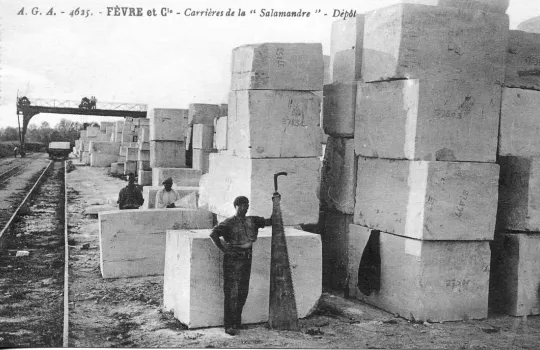
Fermer
Carrières de la "Salamandre", dépôt - © Carrières Patrimoine - Collection François Chaut

Fermer
Carrières de la "Salamandre", chantier souterrain - © Carrières Patrimoine - Collection François Chaut
Fontvieille, the neighbouring village to Les Baux benefitted greatly from the growing demand for stone at this time, as its white stone was said to be of better quality than Les Baux stone. However, the number of quarries in operation in Les Baux at this time attest to the town’s increased production. One such quarry was Les Grands Fonds, known today as Les Carrières de Lumières.

Fermer
In 1821, a red mineral was discovered in the quarries. It was used for the extraction of aluminium and named bauxite after the name of the neighbouring commune of Les Baux-de-Provence.
1935 The closure of the quarry
1935
The closure of the quarry
Following the First World War, the demand for stone for construction purposes declined.
1935 The closure of the quarry

Fermer

Fermer
New building materials such as steel and concrete emerged... More economical than stone, these new materials threatened the future of stone quarries. The quarry was eventually forced to close.
1959 A new artistic vocation
1959
A new artistic vocation
Carrières were the muse, decor, inspiration, and setting for their creative works. Dante saw the site as the ideal setting for the plot of his Divine Comedy and it was here that Gounod created his opera Mireille.
1959 A new artistic vocation
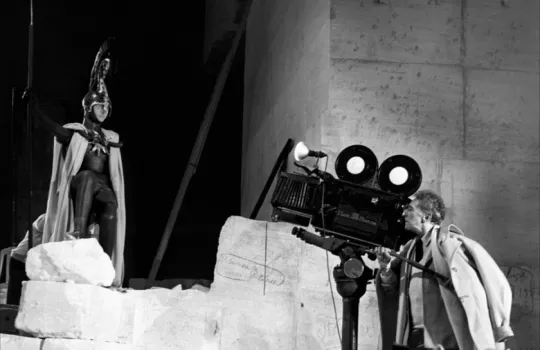
Fermer
Lucien Clergue, Tournage du Testament d'Orphée, 1959 - © Atelier Lucien Clergue / SAIF 2020
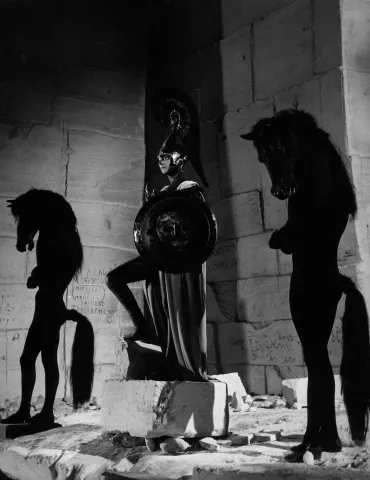
Fermer
Lucien Clergue, Le Testament d'Orphée, 1959 - © Atelier Lucien Clergue / SAIF 2020
In 1959, Jean Cocteau decided to film The Testament of Orpheus on the site. Entranced by the beauty of the place and the surrounding environment, The Testament of Orpheus is a poetic ‘escapade’, at the centre of Cocteau’s thinking, between a dreamlike world and somnolence.
The site was further transformed through the creation of a new project inspired by the ideas of Joseph Svoboda, scenographer of the second half of the 20th century. This project was designed to enhance the space: it was decided that the huge rock walls of the quarry would form the backdrop for a sound and light show.
2012 Culturespaces delegatee of the site
2012
Culturespaces, delegatee of the site
The town of Baux-de-Provence entrusted Culturespaces with the management of the quarry, as part of a public service concession agreement.
2012 Culturespaces delegatee of the site
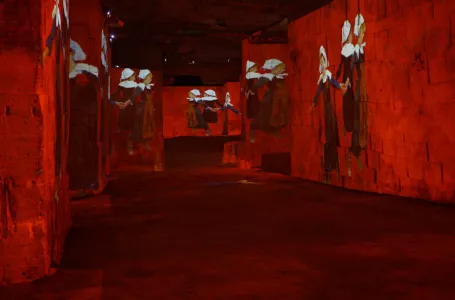
Fermer
Exposition Gauguin, Van Gogh, les peintres de la couleur - © Culturespaces

Fermer
Exposition Gauguin, Van Gogh, les peintres de la couleur - © G. Iannuzzi
Named ‘Les Carrières des Lumières’, Culturespaces has created a unique and innovative digital art center. Les Carrières des Lumières opened in March with the exhibition "Gauguin, Van Gogh: Painters in Colour", directed by Gianfranco Iannuzzi, Renato Gatto and Massimiliano Siccardi.
Since 2012
Every year, since opening, the Carrières des Lumières holds an immersive digital exhibition devoted to a major artist, produced by Culturespaces Studio®.
2013
Monet, Renoir… Chagall. Journeys around the Mediterranean
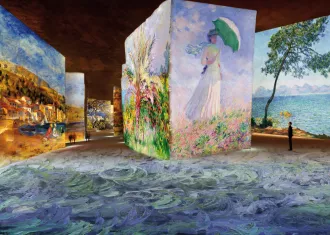
© Culturespaces / Nuit de Chine

© Culturespaces / E. Venturelli
2015
Michelangelo, Leonardo de Vinci, Raphael: The Giants of the Renaissance

© Culturespaces / E. Venturelli
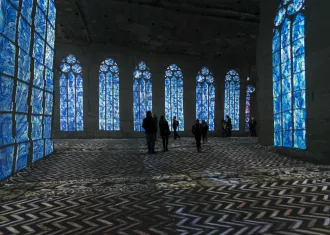
© Culturespaces / E. Venturelli
2016
Chagall, Midsummer Night's Dreams
2017
The Fantastic and Wonderful World of Bosch, Brueghel, Arcimboldo
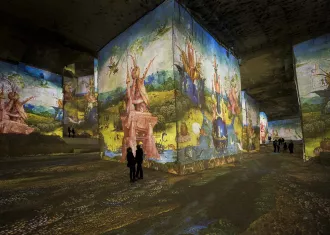
© Culturespaces / E. Venturelli

© Culturespaces / E. Venturelli
2018
Picasso and the Spanish Masters
2019
Van Gogh, Starry Night

© Culturespaces / E. Spiller
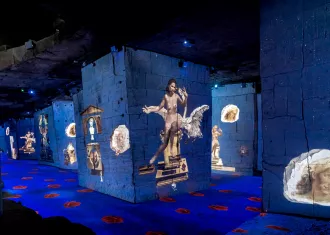
© Culturespaces / E. Spiller
2020
Dalí, the endless enigma
2021
Cezanne, Master of Provence

© Culturespaces / Eric Spiller

© Culturespaces / Eric Spiller
2022
Venice, from Canaletto to Monet
2023
From Vermeer to Van Gogh, the Dutch Masters

© Culturespaces / Eric Spiller

© Culturespaces / Vincent Pinson
2024
Egyptian Pharaohs, from Cheops to Ramesses II
2025
Monet, founder of Impressionism

© Culturespaces / Vincent Pinson























